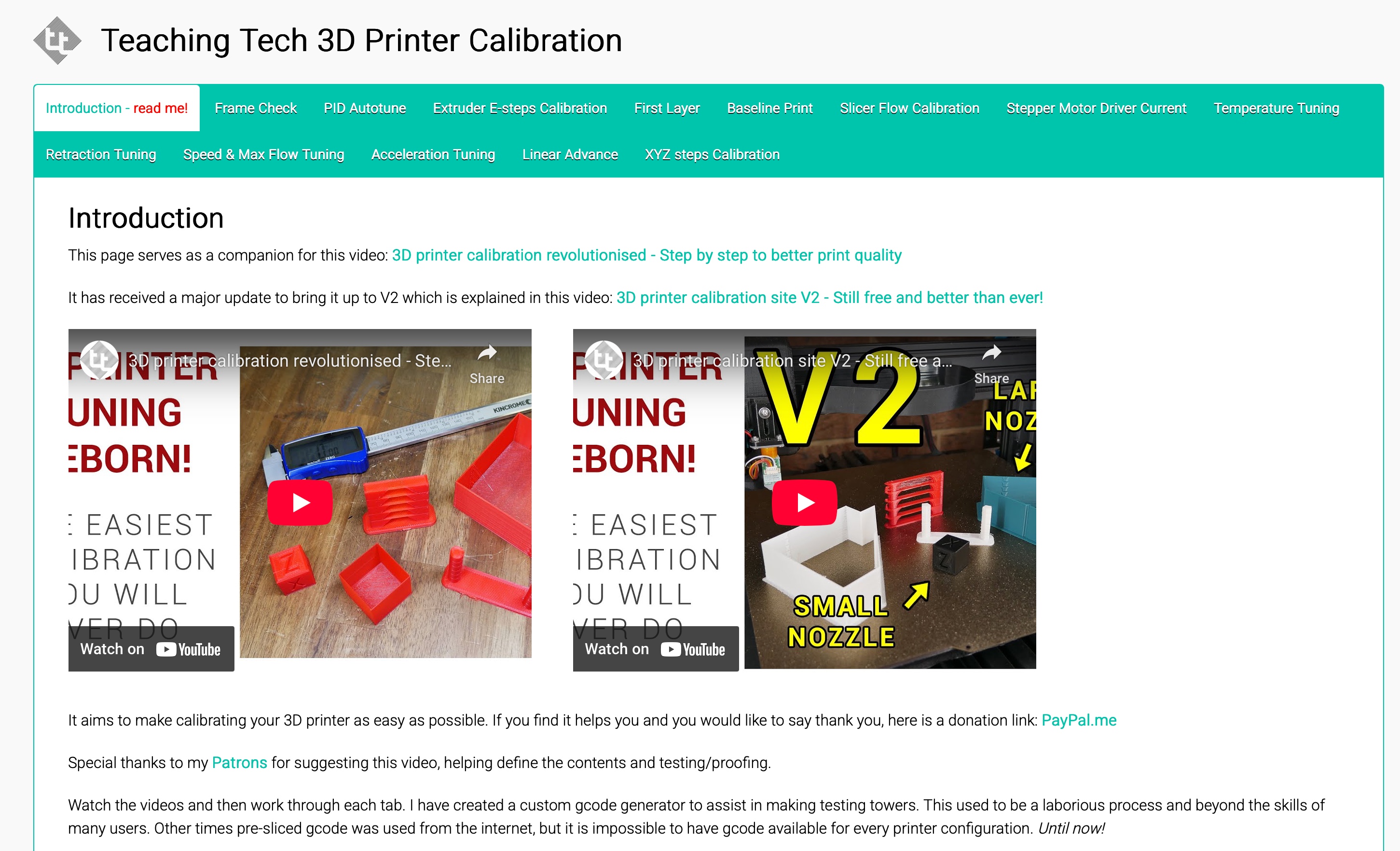Teaching Tech 3D Printer Calibration
Online GuidesThe most comprehensive systematic approach to 3D printer calibration for perfect print quality.
Platforms
Tags
Note: I have not personally tested and verified all tools listed on printer.tools. Please ensure to do your own research and due diligence before using any tool or service. Printer.tools aims to be a helpful directory of useful tools and resources for the 3d printing community. If you find any issues with a listed resource, please let me know.

Teaching Tech 3D Printer Calibration Website
The Teaching Tech 3D Printer Calibration website is a comprehensive companion resource to the popular YouTube video series on 3D printer calibration. This free, interactive platform revolutionizes the traditionally complex calibration process by providing a custom G-code generator that eliminates the need for laborious manual tower creation or relying on generic pre-sliced files.
The site offers a systematic, step-by-step approach to improving print quality through various calibration tests including PID autotune, extruder E-steps, first layer optimization, flow calibration, temperature tuning, retraction settings, speed optimization, and linear advance. Each test generates customized G-code based on user inputs, making calibration accessible to beginners while maintaining compatibility with most 3D printers.
Built on a foundation of Simplify3D-generated G-code modified through JavaScript, the platform prioritizes safety with built-in validation and clear warnings about previewing generated code. The interface remains intentionally simple to avoid overwhelming new users while providing the essential tools needed for precise printer calibration. This resource has become an invaluable tool for the 3D printing community, offering professional-grade calibration capabilities without the typical complexity barriers.
